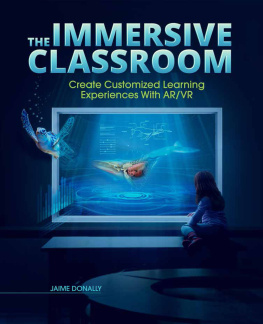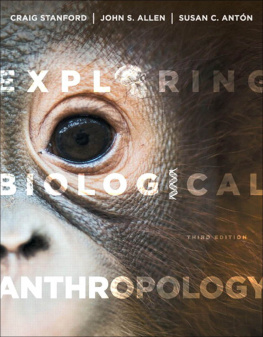
Human Culture
Highlights of Cultural Anthropology
THIRD EDITION
Carol R. Ember
Human Relations Area Files
Melvin Ember

BostonColumbusIndianapolisNew YorkSan FranciscoUpper Saddle River
AmsterdamCape TownDubaiLondonMadridMilanMunichParisMontralToronto
DelhiMexico CitySo PauloSydneyHong KongSeoulSingaporeTaipeiTokyo
Editorial Director: Dickson Musslewhite
Publisher: Charlyce Jones-Owen
Editorial Assistant: Maureen Diana
Program Manager: Emily Tamburri
Project Manager: Nicole Conforti
Marketing Coordinator: Jessica Warren
Procurement Manager: MaryAnn Gloriande
Art Director: Kathryn Foot
Cover Art: age fotostock/Robert Harding
Director, Digital Studio: Sacha Laustein
Media Product Manager: David Alick
Media Project Manager: Amanda Smith
Full-Service Project Management: Jenna Vittorioso
Composition: Lumina Datamatics, Inc.
Printer/Binder and Cover Printer: RR Donnelley; Phoenix Color
 DK Maps designed and productioned by DK Education, a division of Dorling Kindersley Limited, 80 Strand, London WC2R ORL. DK and the DK logo are registered trademarks of Dorling Kindersley Limited.
DK Maps designed and productioned by DK Education, a division of Dorling Kindersley Limited, 80 Strand, London WC2R ORL. DK and the DK logo are registered trademarks of Dorling Kindersley Limited.
This book was set in 10/12, ITC Galliard Std.
Credits and acknowledgments borrowed from other sources and reproduced, with permission, in this textbook appear on the appropriate page within the text (or on pages ).
Copyright 2015, 2011, 2007, 2005, 2002, 1999 Pearson Education, Inc., 330 Hudson Avenue, Hoboken, NJ. All rights reserved. Manufactured in the United States of America. This publication is protected by Copyright, and permission should be obtained from the publisher prior to any prohibited reproduction, storage in a retrieval system, or transmission in any form or by any means, electronic, mechanical, photocopying, recording, or likewise. To obtain permission(s) to use material from this work, please submit a written request to Pearson Education, Inc., Permissions Department, 330 Hudson Ave., Hoboken, NJ.
Library of Congress Cataloging-in-Publication Data
Ember, Carol R.
Human culture / Carol R. Ember, Melvin Ember Third edition.
pages cm
Includes bibliographical references and index.
ISBN 978-0-205-95723-1 (alk. paper) ISBN 0-205-95723-4 (alk. paper)
1. Ethnology.I.Ember, Melvin.III.Title.
GN316.E63 2015
305.8dc23
2014028405
10 9 8 7 6 5 4 3 2 1

Student EditionA la Carte Edition
ISBN-10: 0-205-95723-4ISBN-10: 0-13-394773-4
ISBN-13: 978-0-205-95723-1ISBN-13: 978-0-13-394773-1
For Mel
Always the optimist, who believed that there were laws governing human behavior that could be found if you thought hard enough, worked hard enough, and tested ideas against the anthropological record.

19332009
Brief Contents
Contents
Boxes
Preface
This third edition of Human Culture has a major redesign. Its purpose is the sameit is designed for those who want a shorter version of our Cultural Anthropology book, now in its fourteenth edition. There are 13 chapters rather than 18. We have shortened the text by eliminating a few chapters and by combining some related chapters into one by reducing discussion, examples, and illustrations. However, in contrast to the last edition, where almost all of the chapters were shortened, we have only shortened and combined about a sixth of the chapters. Perhaps most noticeable is the full-color format. But the changes go far beyond style. To add interest, we have added new 23 boxes. As always, we spend considerable time updating the research.
We have always tried to go beyond descriptions to explain not only what humans are and were like but also why they got to be that way, in all their variety. This edition is no different. An important part of updating the text is finding new explanations, and we try to communicate the necessity to evaluate these new explanations logically as well as on the basis of the available evidence. Throughout the book, we try to communicate that no idea, including ideas put forward in textbooks, should be accepted even tentatively without supporting tests that could have gone the other way.

Whats New to This Edition
Engaging Pedagogically-Driven Design
NEW!Learning Objectives have been added to each chapter helping readers to focus on the material ahead. Chapter-ending summary materials have been completely revised to link back to the Learning Objectives presenting a more clear overview of the important material covered in the chapter.
A Clear Understanding of Humans
NEW! Application of major topics.Applied Anthropology Boxes provide students a better understanding of the vast range of issues to which anthropological knowledge can be usefully applied. These boxes offer an additional way to show how anthropology helps people lead better lives.
Focus on Contemporary issues
NEW! Environmental issues.An expanded focus on environmental issues is presented.
Chapter-by-Chapter Changes
Part I: Introduction
: What Is Anthropology?Three new boxes on individual anthropologistsan ethnographer, an archaeologist, and a physical anthropologistand their work.
: Culture and Culture ChangeThis chapter has been revised considerably to make it more engaging. New examples on food preferences and taboos are used to illustrate that culture is learned. The section on controversies about the concept of culture has been rewritten. A new section and figure on baby names in the United States illustrates random copying of neutral traits. A broader and more historical view of globalization is introduced. The revolution section now contains a discussion of the Arab Spring and the difficulties of bringing about change by revolution. There are two new boxes in this chapter. The first is about culture change among pastoralists and farmers in the Mongolian region of China, what has changed and persisted in the face of government pressure in China. The second box discusses an applied anthropologists attempts to accommodate Bedouin needs in designed change programs with the Oman government.
: Understanding and Explaining CultureThis reworked and renamed chapter now has a section on theoretical orientations. Rather than trying to convey all of the important theoretical orientations, we concentrate on evolutionary and ecological paradigms, some of which are important for understanding our adaptational orientation. We have added a new section on ethnography as source material for other research. The chapter has a new box on how alternative theories may explain some of the Abelam customs relating to the growing of giant yams.
Next page














 DK Maps designed and productioned by DK Education, a division of Dorling Kindersley Limited, 80 Strand, London WC2R ORL. DK and the DK logo are registered trademarks of Dorling Kindersley Limited.
DK Maps designed and productioned by DK Education, a division of Dorling Kindersley Limited, 80 Strand, London WC2R ORL. DK and the DK logo are registered trademarks of Dorling Kindersley Limited.
 Whats New to This Edition
Whats New to This Edition